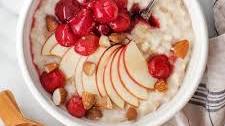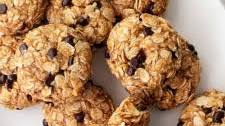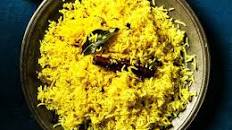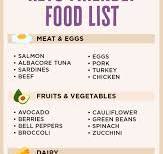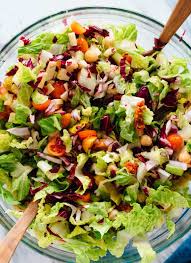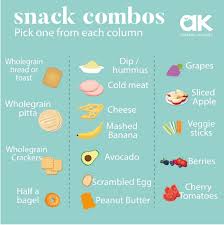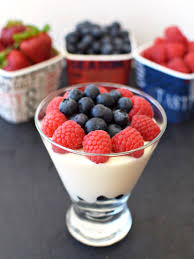Wholesome Oats Recipe Ideas for a Nutritious Breakfast

The Perfect Oats Recipe for a Healthy Breakfast
Oats are a versatile and nutritious ingredient that can be transformed into a delicious and satisfying breakfast. Whether you prefer your oats sweet or savoury, there are countless ways to enjoy this wholesome grain.
Classic Porridge
To make a classic bowl of porridge, combine oats with milk (or water) in a saucepan over medium heat. Stir continuously until the oats have absorbed the liquid and reached your desired consistency. Top with your favourite fruits, nuts, or honey for added flavour.
Oatmeal Pancakes
For a twist on traditional pancakes, try making oatmeal pancakes. Simply blend oats, milk, eggs, and a pinch of baking powder until smooth. Cook the batter on a hot griddle until golden brown. Serve with maple syrup and fresh berries for a wholesome breakfast treat.
Savoury Oat Bowl
If you prefer savoury flavours in the morning, consider creating a savoury oat bowl. Cook oats with vegetable broth instead of milk and top with sautéed vegetables, a poached egg, and a sprinkle of cheese for a hearty and nutritious meal.
Experiment with different ingredients and flavour combinations to find your perfect oats recipe. Whether you enjoy them warm or cold, sweet or savoury, oats are sure to become a staple in your breakfast routine.
Exploring Oats: Classic Porridge, Pancake Variations, Savoury Dishes, Flavour Enhancements, and Overnight Recipes
- How do I make classic porridge with oats?
- What are some variations of oatmeal pancakes?
- Can oats be used in savoury breakfast recipes?
- How can I add flavour to plain oats?
- Are there any overnight oats recipes for a quick breakfast?
How do I make classic porridge with oats?
To make a classic porridge with oats, start by combining oats and milk (or water) in a saucepan over medium heat. Stir the mixture continuously until the oats have absorbed the liquid and reached your desired consistency. This process usually takes about 5-10 minutes, depending on the type of oats used and how thick you prefer your porridge. Once cooked, you can add a pinch of salt or sweeten with honey or sugar to taste. Serve your classic porridge hot and top it with your favourite fruits, nuts, seeds, or a drizzle of maple syrup for added flavour. Enjoy this comforting and nutritious breakfast dish to kickstart your day!
What are some variations of oatmeal pancakes?
When it comes to oatmeal pancakes, there are numerous variations that can cater to different tastes and preferences. Some popular options include adding mashed bananas or blueberries to the batter for a fruity twist, incorporating cinnamon and nutmeg for a warm and spicy flavour, or mixing in chocolate chips or chopped nuts for added texture and richness. For a healthier alternative, you can use Greek yogurt or applesauce as a substitute for some of the traditional ingredients. These creative variations allow you to customise your oatmeal pancakes to create a breakfast dish that suits your individual palate.
Can oats be used in savoury breakfast recipes?
Oats can indeed be a versatile addition to savoury breakfast recipes, offering a nutritious and hearty alternative to sweet options. By incorporating oats into savoury dishes such as oat bowls with vegetables, eggs, and cheese, or using them in savoury oat pancakes topped with savoury spreads or herbs, you can create delicious and satisfying breakfast options that cater to a variety of tastes. The neutral flavour of oats allows them to adapt well to savoury seasonings and ingredients, making them a great choice for those looking to explore new and creative breakfast ideas beyond the traditional sweet offerings.
How can I add flavour to plain oats?
Adding flavour to plain oats is a simple and creative way to enhance your breakfast experience. There are numerous delicious options to elevate the taste of plain oats. You can stir in a variety of ingredients such as fresh fruits like berries or bananas, a drizzle of honey or maple syrup for sweetness, a sprinkle of cinnamon or nutmeg for warmth, chopped nuts or seeds for crunch, and a dash of vanilla extract for extra aroma. Experimenting with different flavour combinations allows you to customise your oats to suit your preferences and create a delightful and satisfying meal each morning.
Are there any overnight oats recipes for a quick breakfast?
For those seeking a quick and convenient breakfast option, overnight oats recipes are a popular choice. By preparing your oats the night before, you can wake up to a ready-to-eat meal that is both nutritious and delicious. Simply combine oats with your choice of milk or yogurt, add in toppings like fruits, nuts, or seeds, and let the mixture sit in the fridge overnight. The oats will soften and absorb the flavours, creating a creamy and satisfying breakfast that requires minimal effort in the morning. Whether you prefer classic flavours like cinnamon and honey or more adventurous combinations like peanut butter and banana, overnight oats offer endless possibilities for a hassle-free start to your day.

